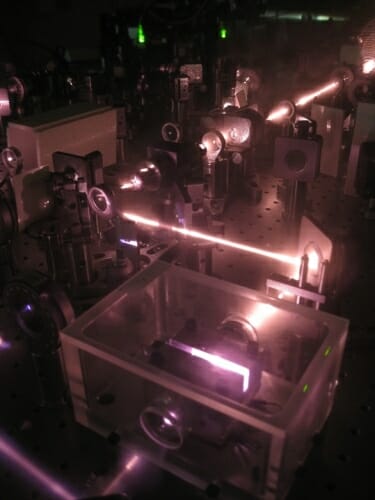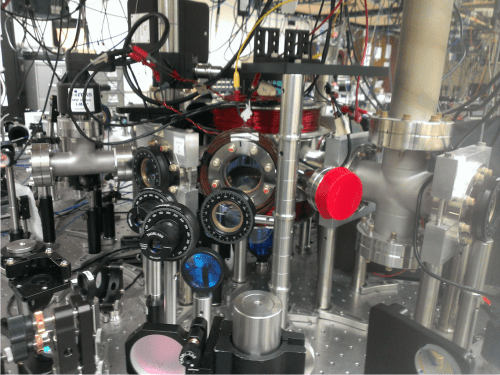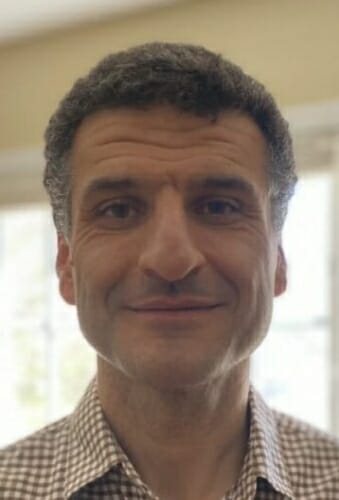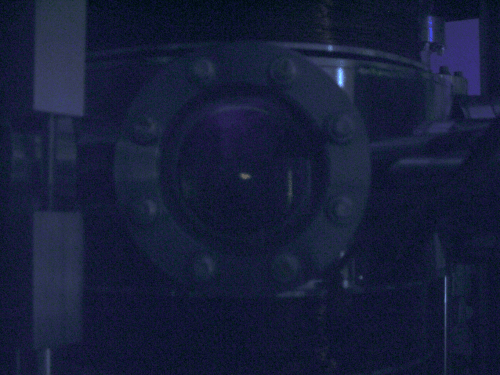Surprising communication between atoms could improve quantum computing
A group of University of Wisconsin–Madison physicists has identified conditions under which relatively distant atoms communicate with each other in ways that had previously only been seen in atoms closer together — a development that could have applications to quantum computing.

In their experiments, UW–Madison physicists led by Deniz Yavuz immobilized a group of rubidium atoms by laser-cooling them to just slightly above absolute zero. Then, they shined a laser at rubidium’s excitation wavelength to energize electrons. Photo courtesy of Yavuz Lab
The physicists’ findings, published Oct. 14 in the journal Physical Review A, open up new prospects for generating entangled atoms, the term given to atoms that share information at large distances, which are important for quantum communications and the development of quantum computers.
“Building a quantum computer is very tough, so one approach is that you build smaller modules that can talk to each other,” says Deniz Yavuz, a UW–Madison physics professor and senior author of the study. “This effect we’re seeing could be used to increase the communication between these modules.”
The scenario at hand depends on the interplay between light and the electrons that orbit atoms. An electron that has been hit with a photon of light can be excited to a higher energy state. But electrons loathe excess energy, so they quickly shed it by emitting a photon in a process known as decay. The photons atoms release have less energy than the ones that boosted the electron up — the same phenomenon that causes some chemicals to fluoresce, or some jellyfish to have a green-glowing ring.
“Now, the problem gets very interesting if you have more than one atom,” says Yavuz. “The presence of other atoms modifies the decay of each atom; they talk to each other.”
If a single atom decays in one second, for example, then a group of the same type of atom may decay in less — or more — than one second. The timing depends on the conditions, but all the atoms decay at the same rate, either more quickly or more slowly. So far, this type of correlation has only been observed if the atoms are within about one wavelength of the emitted light from each other. For rubidium atoms, used by Yavuz and his colleagues, it means within 780 nanometers — right at the edge between the wavelength of red and infrared light.

The ultrahigh vacuum chamber where rubidium atoms are laser cooled and excited. Photo by Deniz Yavuz
The scientists wanted to see how greater distances between the atoms would affect the decay of rubidium atoms. If the prevailing idea were correct, then two rubidium atoms further apart than 780 nanometers would act like individual atoms, each giving the characteristic single-atom decay profile.
In their experiments, they first immobilized a group of rubidium atoms by laser-cooling them to just slightly above absolute zero, the temperature at which atomic motion ceases. Then, they shined a laser at rubidium’s excitation wavelength to energize electrons, which decay while emitting a photon at the characteristic 780 nm. They could then measure the intensity of that emitted photon over time and compare it to the decay profile of a single rubidium atom.
“In our case, we showed that the atoms can be as far away as five times the wavelength, and still these group effects are pronounced — the decay can be faster than if the atom were there by itself, or slower,” Yavuz says. “The second thing we showed is, if you look at the time dynamics of the decay, it can start fast and then get slower. It switches, and that switch had never been seen before.”
With these new insights into building correlations between atoms, Yavuz and his research group are looking into the quantum computing applications of their findings. They are investigating which experimental conditions lead to different types of correlated states, which can lead to entanglement and efficient transmission of quantum information.






